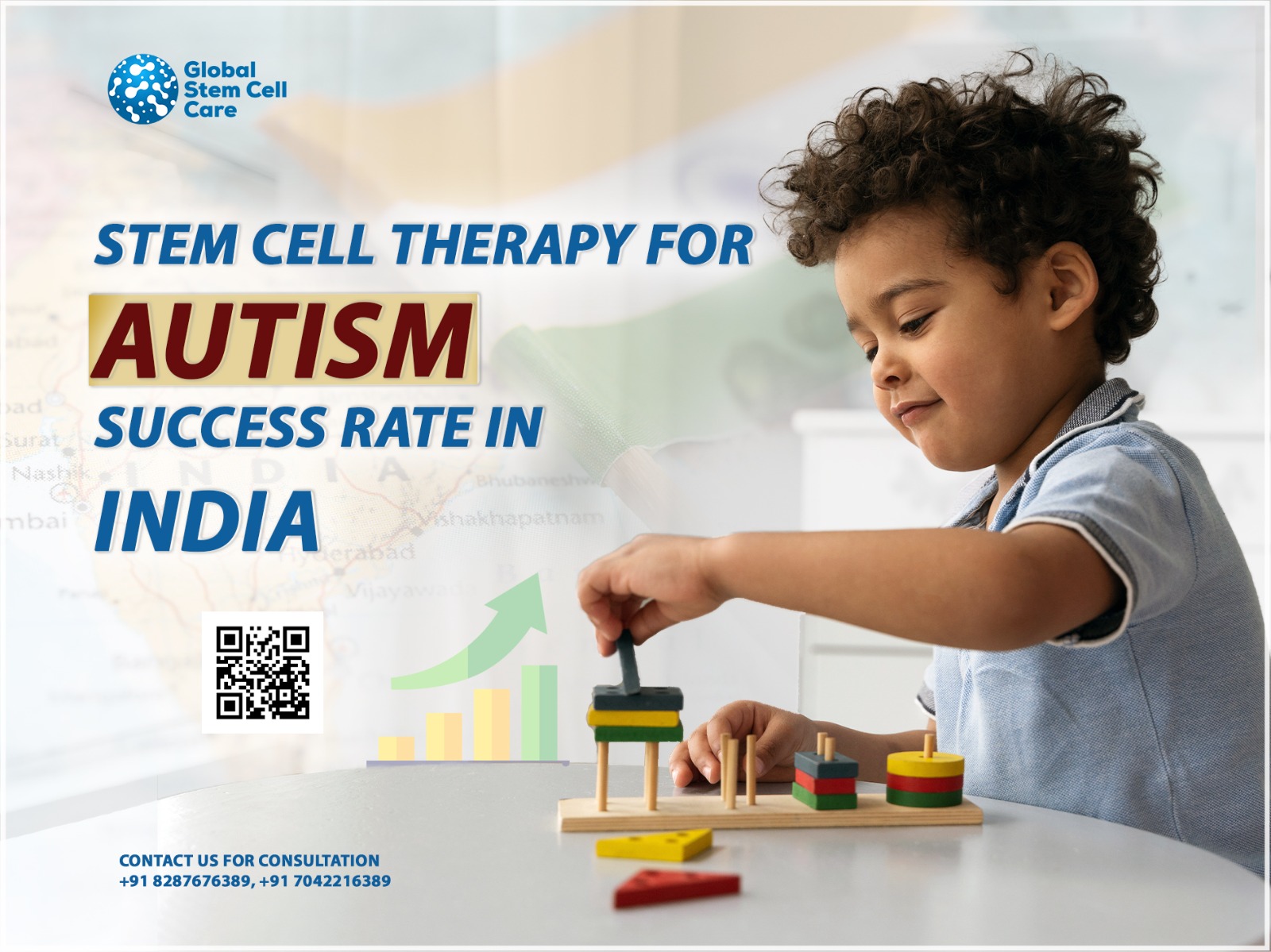Autism Spectrum Disorder (ASD) affects millions of children worldwide. To discuss India alone, awareness and diagnoses have increased exponentially over the last decade. Parents looking for effective treatments are now turning towards stem cell therapy, a very promising medical treatment that’s revolutionizing the conversation about what to do with autism. In contrast, the conventional treatments that only address symptoms, stem cell therapy addresses repairing and rebuilding the underlying neurological pathways affected by autism.
With the progress of the medical sector, India has become one of the places to visit for this new treatment, with facilities like Global Stem Cell Care offering up-to-date treatments for kids on the spectrum. But how successful is it, and is it worth the attempt? Let’s us understand.
How Stem Cell Therapy Works for Autism?
Stem cell therapy uses stem cells that are tiny building blocks of life, they can differentiate into the various cell types in the body. When used as therapy, such cells are administered into the patient’s body to start healing by replacing or regenerating the damaged neurons and help restore balance to the immune system in the body.
For autism patients, this can enhance speech, social function, attention, and sensory integration. The cells migrate to the target site, suppressing inflammation or damage, repairing neuronal tissues, and modulating the immune system.
Why Parents Are Opting for Stem Cell Therapy for Autism in India
Stem cells have the ability to self-renew and differentiate into nerve and brain cells. It is thought that in individuals with autism, stem cells can reduce inflammation in the brain, form neural connections, and repair some of the damaged tissues that are responsible for the behaviors associated with autism, including poor communication, social interaction, and repetitive behaviors.
Benefits Seen After Stem Cell Transplant in Autism:
Here are some benefits:
- Better Eye Contact: Numerous children who received stem cell therapy had improved eye contact after months of the treatment.
- Improved Speech and Communication: Parents indicate a significant increase in vocabulary, improved pronunciation, and readiness to start talking.
- Decrease in Hyperactivity: Stem cell therapy reduced impulsiveness and improved concentration, especially in school environments.
- Improved Social Interaction: Children who shunned social interaction started responding to their names, showing emotions, and even engaging in group play.
- Reduced Repetitive Behavior: The overall reduction in stimming and repetitive actions has been noted in various post-treatment reports.
- Enhanced Sleep Patterns: Parents also reported enhanced sleeping hours and reduced disturbances at night.
Factors Influencing the Success of Stem Cell Therapy in Autism
Here are some factors that influence the success of stem cell therapy:
- Child’s Age
- Younger kids (generally under the age of 10) usually improve more with stem cell therapy.
- Their brains are still in development, so regeneration and new neural links are more effective.
- Severity of Autism
- Most improvements are observable in children with mild or moderate autism.
- In serious instances or in the event of comorbidities (e.g., epilepsy, genetic illnesses), the treatment can have minimal positive effects.
- Overall Health and Immune Function
- General health in a child matters a great deal. They are good candidates for therapy if they have robust immune systems and no serious chronic disease.
- Type of Stem Cells Used
- The origin and purity of stem cells are important, whether autologous (from the patient’s own body) or allogeneic (from a donor), and whether mesenchymal stem cells or umbilical cord-derived.
- Well-processed, high-purity stem cells result in improved outcomes.
- Route of Administration
- Intravenous, intrathecal (into the spinal canal), or both routes of administration can be used for stem cells.
- The route used affects how efficiently the cells get into the central nervous system.
- Number of Sessions
- More than one session of stem cell transplant is usually required to see significant and lasting improvement.
- Treatment regimens sometimes include repeated rounds over months.
- Rehabilitation After Therapy
- The most effective stem cell therapy is when it’s followed by rigorous rehabilitation, such as speech therapy, behavioral therapy, and occupational therapy.
- The more regular the follow-up treatment, the greater the success.
Why Global Stem Cell Care?
Global Stem Cell Care, an India-based consultancy, is a pioneering service offering consultancy for stem cell therapy for autism. They have a team of experts who are ready to guide and craft a customized treatment plan, implement strict safety controls, and provide follow-up care.
They have connections with specialist physicians, hospitals, and top-of-the-line laboratory facilities to help in your healing journey.
Epilogue
Autism doesn’t have an off-the-shelf remedy, yet stem cell therapy is breaking down doors that were previously shut. The success rate is great, particularly when the treatment is initiated at an early age. With ethical consultancies such as Global Stem Cell Care, now parents have access to therapies that have the power to actually change their child’s life.
If you’re looking at a new way forward for autism treatment, stem cells can be the game-changer you’ve been looking for.
